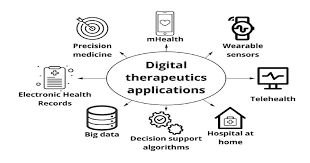DIGITAL THERAPEUTICS have gained momentum in recent years. What was once thought to be an adjunctive form of treatment at best and a toy at worst is now headed toward mainstream clinical practice. There are FDA-approved solutions for a number of conditions, including addiction, depression and PTSD. Some of these are prescription treatments and are becoming part of the treatment guidelines for certain conditions. Digital therapeutics that are powered by behavioral science, patient data and artificial intelligence are able to help patients to adopt and sustain healthier behaviors through engagement-based functionality like gamification.
There’re also expanding applications to areas like musculoskeletal disease and chronic disease management. We hear about other potential applications of AI in therapeutics almost every day. These now include choosing the right treatment for sepsis and the optimal doses for antibiotics, the use of machine vision in surgeries and with robotics, assistance in microsurgery such as in eye radiation therapy improvement, and more.
Juniper Research, a UK-based analyst, found that the number of people using wellness apps and digital therapeutics is set to grow from 627 million in 2020 to more than 1.4 billion in 2025, a rise of 123.3%. And that’s not all. Over the same period of time, the value of the market is expected to grow by nearly ten times, from $5.8 billion to over $56 billion. This robust growth will be driven by the myriad of applications that we just discussed.
My feeling on digital therapeutics is that the current use cases in healthcare are just the tip of the iceberg. We’re barely scratching the surface and in the near future, we’ll be relying on it for many different therapeutic applications. That’s good news for all of us!






